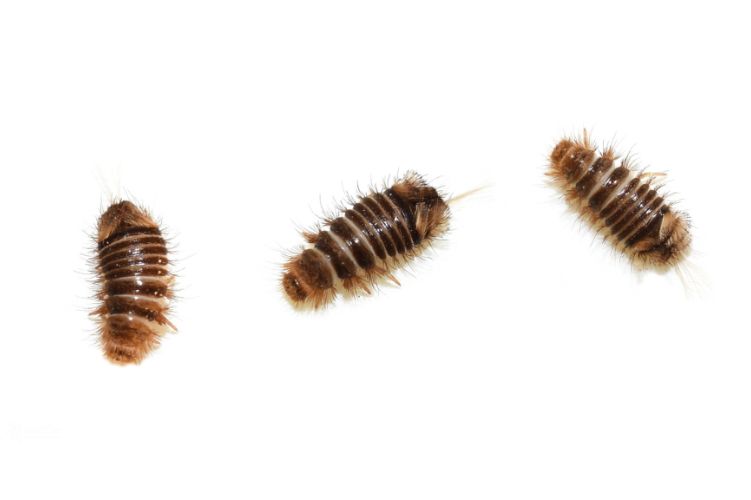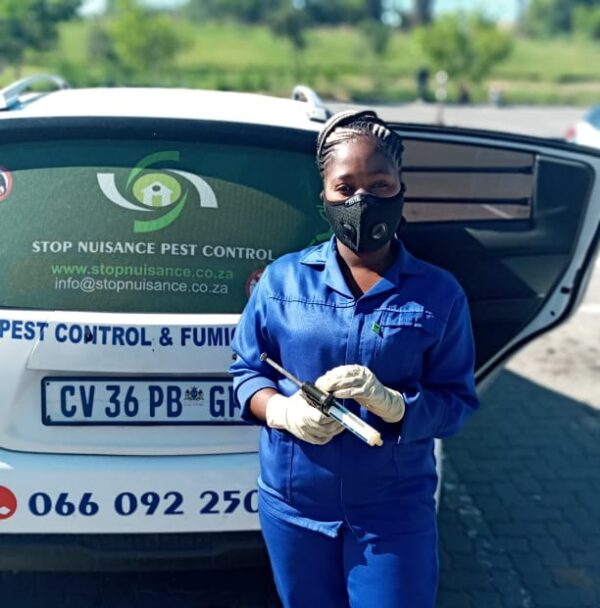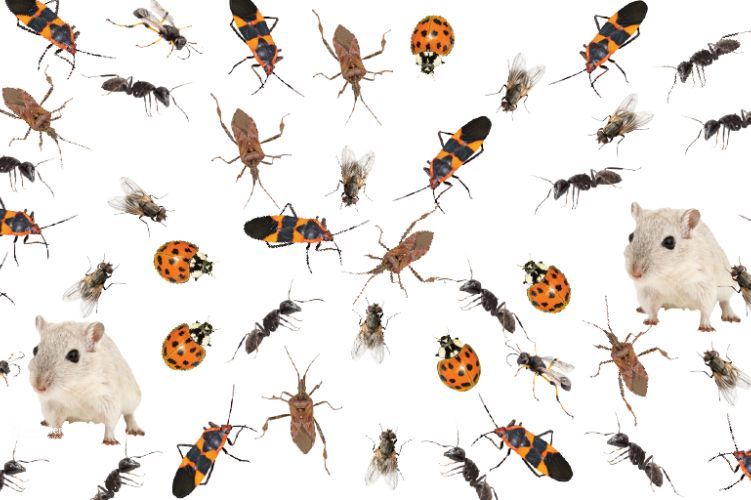As an experienced pest control technician with over 7 years in the field, I’ve seen my fair share of fall pest problems. Cooler weather, falling leaves, and people spending less time outdoors gives many insects and rodents no choice but to seek shelter inside our homes. Read more about “Top 10 Most Common Fall Pests and How to Stop Them”.
In this article, I’ll share the top 10 most common pests I encounter during the fall season based on my extensive experience in the pest control industry across numerous households. I’ll also provide effective solutions for stopping these unwanted guests dead in their tracks.
Table of Contents
Top 10 Most Common Fall Pests and How to Stop Them
1. Boxelder Bugs
Each fall, I get at least a dozen calls for boxelder bug infestations. These black and red insects cluster together on the sunny sides of houses to keep warm. Once the weather gets cooler, they look to sneak inside cracks, crevices, and wall voids.
In one memorable case, hundreds of boxelder bugs had amassed behind the siding of a two-story home. The homeowners only discovered them once they started appearing indoors and spotting the walls. Getting rid of that group took several treatments and sealing up all exterior cracks.
To prevent boxelder bugs, prune any boxelder trees nearby, seal exterior openings with caulk, and apply an outdoor residual insecticide in late summer. This stops them before they congregate en masse.
2. Cluster Flies
As a pest control expert for 7 falls now, I’ve seen cluster flies invade attics and wall voids even more than boxelder bugs. These large, sluggish flies look similar to house flies but are darker gray. They earn their name from their clustering behavior inside structures.
Last fall, cluster flies blanketed the inside of a vacation home’s attic right before the owners returned from a summer away. We had to treat the attic and properly seal it so no more could sneak in. An ounce of prevention would’ve saved the homeowners that headache.
To avoid cluster flies, seal any exterior cracks and holes, install door sweeps and screens, and apply insecticides around potential entry points in early fall. Doing this keeps them from amassing by the dozens indoors.
3. Asian Lady Beetles
While Asian lady beetles may look neat, they can be a true nuisance once they start invading your home. I’ve seen them swarm inside walls, attics, and window frames in the fall seeking warmth and shelter. Their sheer numbers can cause quite the panic if an infestation goes unchecked!
A few years ago, hundreds of Asian lady beetles made their way between an exterior wall and the interior drywall of an older home. The homeowners kept finding them flying and crawling inside despite not knowing where they came from. Tracing the source required extensive investigation and treatment of the wall voids.
Routinely seal any cracks and crevices in your home’s exterior to deter Asian lady beetles. Inspect window and door frames for gaps. Also apply insecticides around potential entry points before they arrive. Doing so will save you major headaches.
4. House Mice
As temperatures drop each fall, house mice seek the warmth, food, and shelter of indoor environments. In my experience, a mouse problem left alone often leads to major structural damage and health risks from droppings and contamination.
A couple years back, I investigated mouse noises inside an attic for some concerned homeowners. It turned out an entire family of mice had built a massive nest atop the insulation! They found a way in through a small gap where a pipe protruded. We had to remove their nest and droppings, treat for any parasites, seal the gap, and set traps to catch the remainder.
The best way to keep mice out is to “mouse proof” your home before fall hits. Seal, caulk, and cover any interior or exterior gaps mice can squeeze through. Also install door sweeps and screens to deter these persistent pests.
5. Multicolored Asian Lady Beetles
In the last few falls, I’ve been dispatched to address more and more calls about multicolored Asian lady beetles. While they look neat, these pests invade structures to overwinter in large aggregations. Their sheer numbers can be quite the nuisance!
In one case, hundreds had slipped through exterior cracks of a two-story home into the wall voids. As temperatures dropped, they made their way inside through electrical outlets and light fixtures, spooking the homeowners. We had to treat the full interior and exterior perimeter to get things under control.
To avoid the headache of an infestation, thoroughly seal any gaps, cracks or crevices on your home’s exterior. Also apply insecticides around potential entry points before they start looking to sneak inside.
6. Carpenter Ants
As colonies grow larger in the fall, carpenter ant workers search more aggressively for food and shelter. I’ve seen them invade the wooden structural elements of numerous homes during my years in pest control. Given the right conditions, they can cause major structural damage.
Recently, homeowners called about a carpenter ant problem they’d dealt with for 3 years now. The ants had established inside moisture-damaged roof rafters, coming indoors along an electrical conduit. The infestation took several treatments directly to gallery areas plus moisture reduction and wood repairs to fully address.
Routinely inspect your home’s exterior for signs of carpenter ants, moisture issues, or wood damage. Also keep firewood and tree branches from direct contact with your home. Doing so deters these destructive pests from sneaking inside.
7. Carpet Beetles
Carpet beetles are fabric and pantry pests that thrive indoors. As the weather cools down each fall, I often get calls about sudden carpet beetle appearances. Their larvae feed on materials like wool, leather, pet hair, pantry goods and more once inside.
A few years back, carpet beetle larvae had infested the pet hair and food crumbs under a refrigerator, damaging its insulation. The homeowners complained of seeing small beetles appear in their kitchen more and more often. Treatment required moving and thoroughly cleaning under the appliance to get rid of their food source.

Inspect your home’s nooks, cracks and crevices for signs of carpet beetles in the fall. Pay close attention to pantries, closets, carpets and upholstered furniture. Also thoroughly vacuum and clean to remove any hair, debris or food spills they can feed on. Doing so keeps them from multiplying.
8. Western Conifer Seed Bugs
As the weather cools down each fall, I get calls about western conifer seed bugs infiltrating homes through small cracks and crevices. They seek warmth and shelter in wall voids, attics, and other hidden spaces, sometimes appearing indoors suddenly.
One year, hundreds amassed inside a vacation property’s hollow deck supports unbeknownst to the owners. Once temperatures dropped, they came inside through gaps along sink plumbing. The swarm inside alarmed the homeowners when they arrived. We had to treat the full interior and exterior to address the problem.
Sealing exterior cracks and holes before fall is key to keeping western conifer seed bugs out. Their small size allows them to exploit even tiny gaps. Be sure to check window and door frames along with utility penetrations. Installing door sweeps and screens also deters them.
9. Millipedes
In my experience, fall rains bring millipedes inside as they seek drier habitats. These many-legged pests thrive under moist leaves, mulch, and debris outdoors. Once inside, millipedes curl up and die quickly, leaving behind foul odors and stains.
I’ve seen them appear by the dozens in basements, crawl spaces, garages and more after heavy fall showers. One couple had hundreds swarm their basement stairwell overnight, leaving quite the mess! We treated their foundation’s exterior perimeter and recommended adjusting landscaping to reduce moisture against their home’s foundation.
To keep millipedes out this fall, install dehumidifiers in basements and crawlspaces, remove piles of leaves or mulch around your foundation, and repair gutters or drainage issues. Reducing moisture inside and out discourages these nuisance pests.
10. Brown Marmorated Stink Bugs
In recent years, brown marmorated stink bugs have become more and more common fall home invaders. They seek protected overwintering sites behind siding, in attics, and other exterior voids. I’ve seen them suddenly appear indoors in large numbers when the weather cools.
Last fall, dozens emerged inside an older home after overwintering behind its vinyl siding the previous year. The homeowners constantly found them crawling on walls and ceilings, releasing their unpleasant odor when disturbed. We had to treat the full exterior and make repairs to permanently exclude them.
Sealing cracks and crevices helps keep brown marmorated stink bugs from infiltrating your home. Concentrate on window and door frames as well as utility line penetrations. Also install tight-fitting screens over ventilation points. Taking these steps now prevents major headaches when they try to sneak in.
Defend Your Home This Fall
As a pest control technician, I see firsthand every fall how important prevention is for keeping common seasonal pests out of households. Taking the appropriate exclusion and sanitation steps now makes a big difference down the road. It saves homeowners tons of trouble.
I hope this overview gives you some direction on which fall pests to watch out for and how to proactively safeguard your home. Let me know if you have any other questions! I’m always happy to offer professional advice on defending against seasonal home pests and keeping families safe from their nuisance and damage. I hope you like reading “Top 10 Most Common Fall Pests and How to Stop Them”.

With over 5+ years of experience in pest control and a PhD in Entomology, our author brings a blend of scientific knowledge and practical expertise to Pestifier.com. Passionate about creating pest-free environments, they provide effective tips and strategies for managing and preventing pest infestations. Connect on Facebook for the latest updates and insights.

